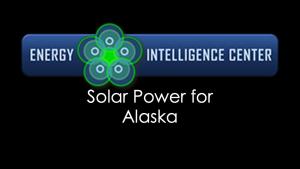- 7 reads

Our GREENandSAVE Team is pleased to share information like this about sustainability solution providers. If you would like to submit information on your company, please contact us.
The Energy Intelligence Center (EIC) has a strategic partnership with Jordan Energy which is a top solar solutions provider. This article includes some highlights as well as Solar power news in Alaska. EIC’s initial founder, Charlie Szoradi, has a long-standing relationship with Jordan Energy’s founder, Bill Jordan. Charlie engaged Bill and his team for the solar system on Charlie’s beach house in Stone Harbor, New Jersey. Charlie also recently introduced Jordan Energy to one of EIC’s largest clients for major industrial rooftop systems in Pennsylvania and Texas. Click to learn more about Sustainability_Charlie on Instagram. For his youtube channel click here: Learn from Looking.
In our consulting and system design capacity, we focus on solutions and specifications that are agnostic to specific technology providers. We undertake rigorous due diligence to determine the performance of clean technologies across the dynamic sustainability marketplace. To learn more about solar power and other clean tech partnerships, Contact Energy Intelligence team.
Here is an example of some Solar Power News in Alaska:
WASILLA, Alaska (KTUU) - If there weren’t enough reasons to celebrate the return of summer in Alaska, a campaign to solarize homes is looking north to the future of clean energy and offering a return on investment out in the Matanuska-Susitna Borough.
Solarize Mat-Su is a partnership between the Alaska Center, the Alaska Center for Energy and Power and local community members that offers a one-stop location for homeowners who are navigating the process of getting solar panels installed in order to offset the cost of their electric bills.
The owner of Alaska Solar, Ben May started his company in 2015. After participating in the original campaign Solarize Anchorage, his business has expanded well outside of the Anchorage city limits.
“We were expanding pretty quickly,” May said. “It took off.”
The program helps homeowners understand and implement solar panel installation in their homes, and can be performed in a short amount of time and at low cost. According to May, on average the process takes about two years to complete. With the help of the solarize program, the time frame is shortened to about two months.
Neighborhoods wanting to participate together in the program will be offered group discounts on solar panels and installation.
“It really helps get people going and trust the process,” May said.
The timing of the program comes on the heels of a federal solar tax credit incentive set to expire in 2024. The credit is a dollar for dollar reduction in income tax and covers 26% of costs spent on solar expenses — that includes any upgrades needed to a home electrical system in order to utilize solar.
However, that credit drops to 22% next year, and 2023 is the last year the investment tax credit will be offered unless Congress moves to renew it.
“The clock is ticking on getting these incentives,” May said. “Which really make that return on investment real for a lot of people.”
The process starts by requesting a site visit for an estimate. Once a visit is completed, a proposal will be drafted for a homeowner in approximately 1-2 weeks. If a homeowner decides to move forward with the work, installation only takes a couple of days, but it could take a few weeks before the borough and utility companies approve applications.
Solarize Mat-Su has had about 85 interested people so far this year, but May indicated that there was really no limit on how many installations they would be able to this summer.
“We can get you going in the early summer, and then making power throughout the year,” May said.
While the sun rises late and sets early in the winter months, May said the panels are designed to sustain Alaska’s harshest conditions. The panels are installed to withstand 160 mph wind gusts as well as 113 pounds per square foot in weight of snowfall, and because solar panels have no moving parts there is very little that can break or malfunction, making it a low maintenance endeavor.
Granted, the winter months are also not often a revenue-generating time period for solar power, but May said the long summer days more than makeup for it.
“In a week in June — an average week in June — you can make as much power as December and January combined,” May said. “So really the money is in the spring, summer, and fall.”
The electrical utility of a home acts as the system’s battery by tracking energy production and automatically offsetting monthly electrical consumption. Alaska Solar also offers lithium-ion batteries that will keep a house running during a power outage.
Last year, nearly 600 homes across Alaska took advantage of the solarize campaign.
“You get to make your own power. It’s clean power,” May said.

